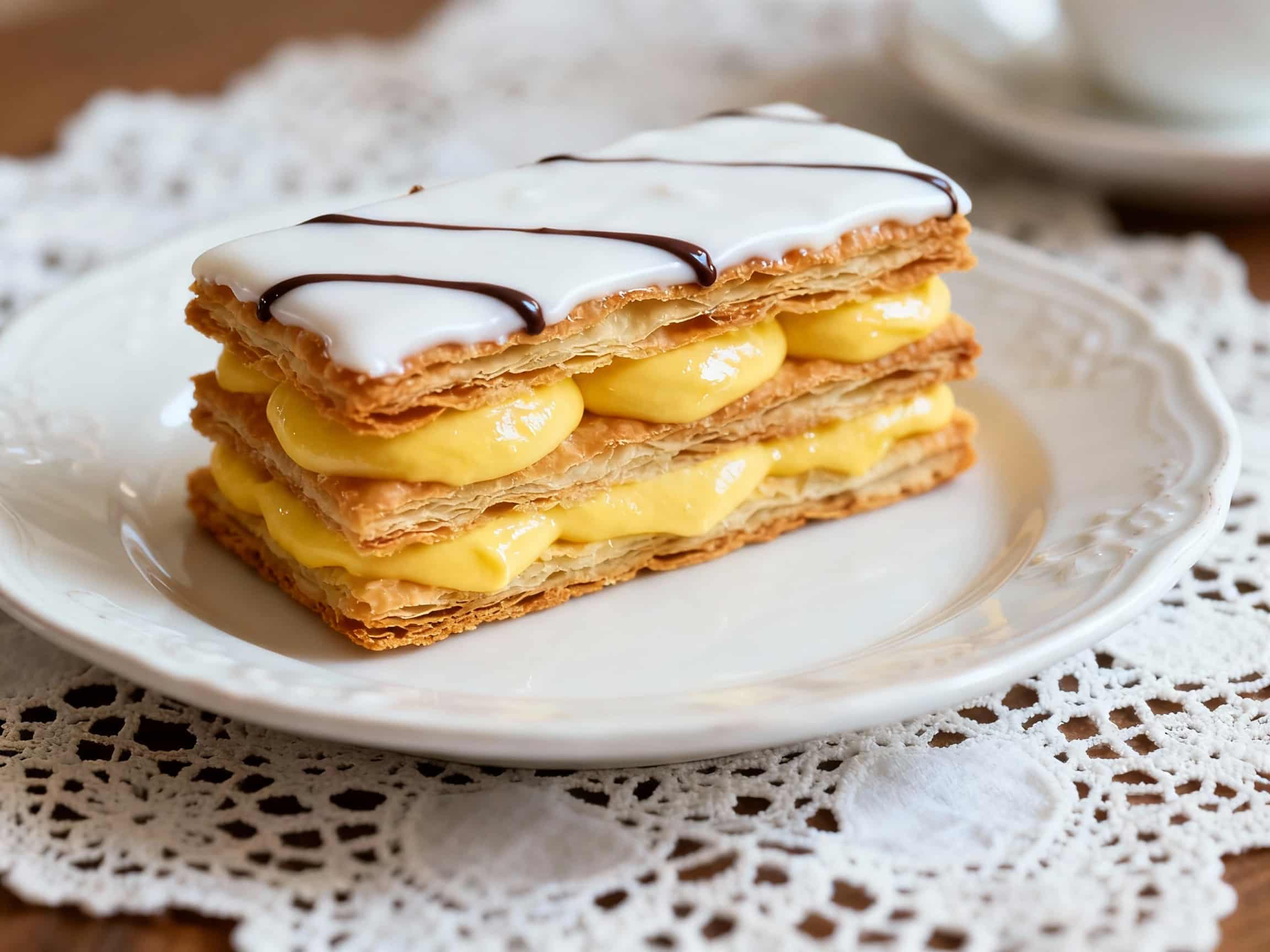
Mille-feuille
Mille-feuille
- Country
- France
- Region
- Not specified
- Recipes
- 0 Recipes
Dish information
The Mille-feuille, meaning 'thousand leaves,' is a masterpiece of French patisserie, renowned for its delicate layers and rich flavor. While its exact origin is debated, a confection similar to the mille-feuille appeared in French cookbooks as early as the 17th century. Chef François Pierre de la Varenne is often credited with its first known recipe in 'Le Cuisinier François' in 1651, although the modern form is more often attributed to Marie-Antoine Carême, a celebrated 19th-century French chef. Carême refined countless classical French dishes and pastries, elevating their presentation and complexity. The essence of the mille-feuille lies in its meticulous construction: three layers of incredibly flaky puff pastry, separated by two generous layers of smooth, rich pastry cream (crème pâtissière). The top is traditionally adorned with a dusting of powdered sugar, a glaze of fondant, or sometimes an intricate marbled pattern made with chocolate and vanilla fondant. This dessert is a showcase of a pastry chef's skill, as achieving the perfect flaky texture is a true art. It represents elegance and precision in French dessert making and is a staple in patisseries across France and beyond, cherished for its delightful contrast between crispy pastry and creamy filling. It is often enjoyed for special occasions or as a sophisticated afternoon treat.
Timeline
A recipe conceptually similar to mille-feuille appears in François Pierre de la Varenne's 'Le Cuisinier François'.
The pastry evolves and gains popularity in French aristocratic circles.
Marie-Antoine Carême is often credited with refining the modern mille-feuille recipe and presentation.
Related recipes
0 recipesWe'll add related recipes for this dish soon.